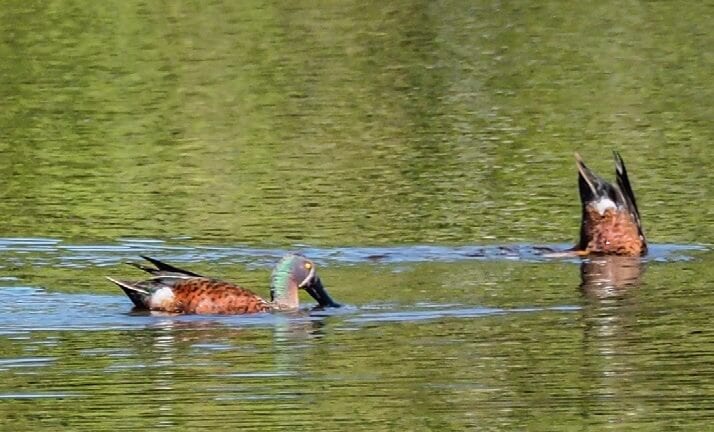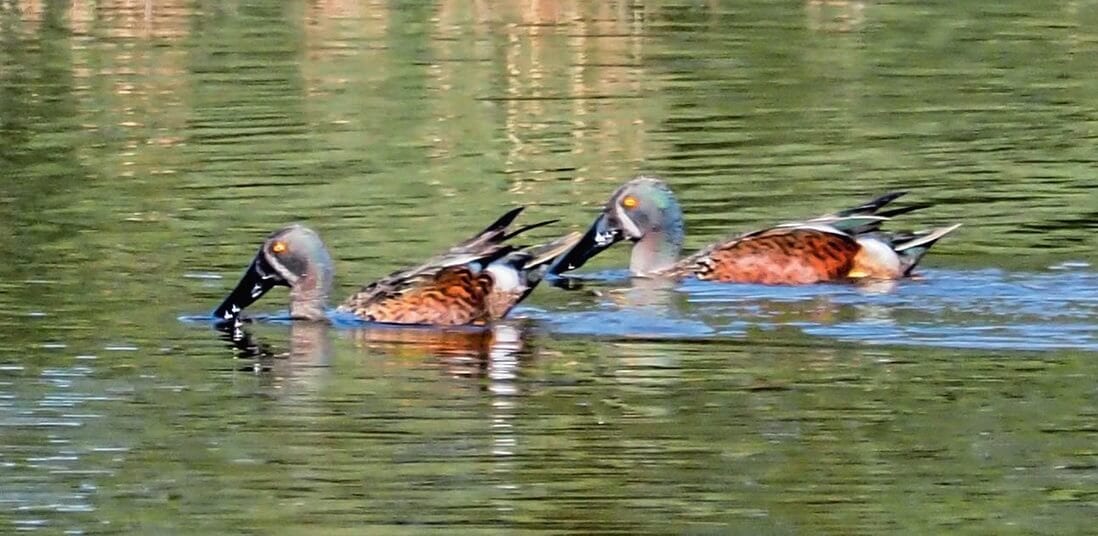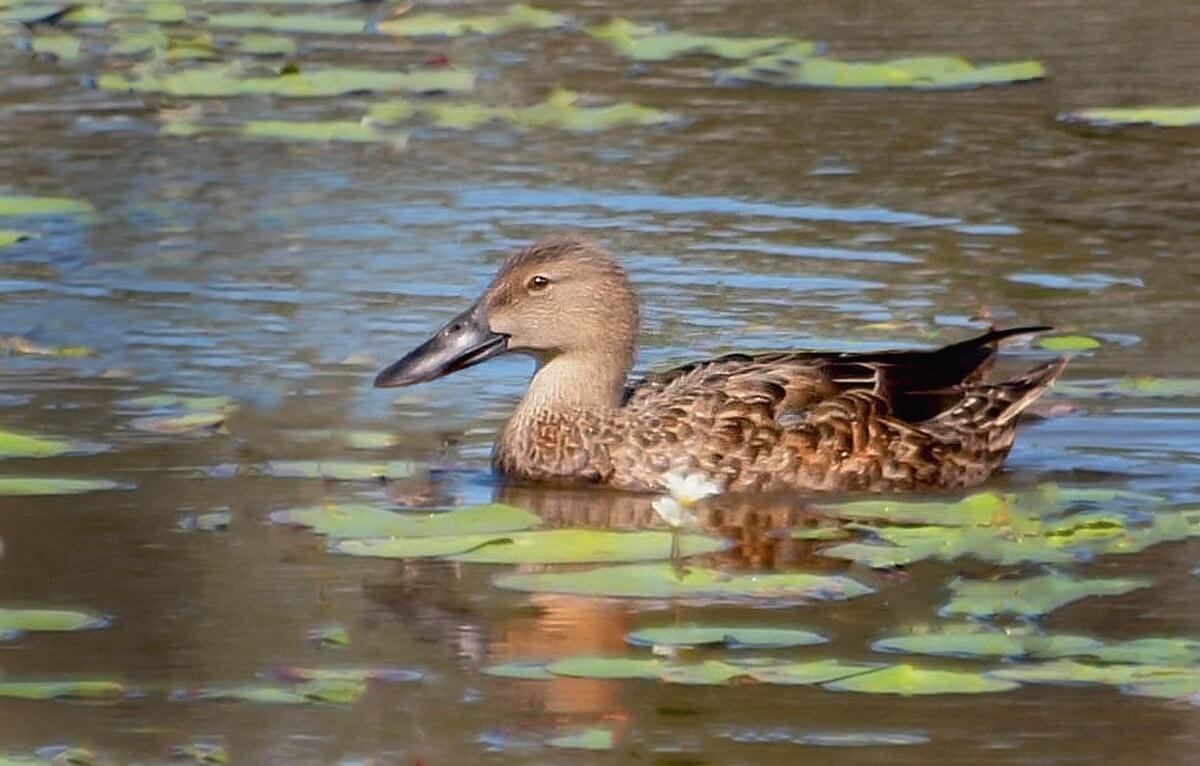Tags: Wildlife. Native. Birds. Ducks. Australian. Bribie Island. Queensland. Moreton Bay. AUSTRALASIAN SHOVELER
Only very occasionally will you see Australian Shovelers on Bribie Island but during the first few weeks of May two males and a female paid a visit to Buckley’s hole. I have only seen them twice during the time I have lived on Bribie Island. The last time was in March 2014 when Shovelers stayed for several weeks and again at Buckley’s Hole. Males are quite colourful with blue, chestnut, black and white bodies and a grey-green head. Females are mottled brown with a little bit of blue on the wing.
Featured Image(above): Female Shoveller, Buckley’s Hole
Probably their most noticeable feature is their large shovel-shaped bill which is about 56-67 mm long. When swimming they sit very low in the water so with the bright colours of the male they can be distinguished quite easily from other ducks. They are 45-54 cm in length and weigh 545-852g. Usually silent, Shovelers make soft sounds during the courting period. They are very cautious and tend to spend a lot of their time a distance from the shore.
Shovelers are found from Cairns to Tasmania and inland, also in NZ mostly in areas where there is dense vegetation in the water. They are spread over a large area often in the company of other ducks but are mostly uncommon and nomadic. Their large shovel-shaped bills with grooves along the edges are used to filter insects, crustaceans and vegetation from the water. They swim in wide circles, upending every few metres to obtain their food using their bills in a dabbling action.

Bottoms Up
Because of the shape and size of its bill they can only feed in water and are unable to source their food supply from the land. Breeding takes place usually from August to November or at any time after rain. During courting hens are usually pursued by several drakes as there are more males than females in their population. Scuffles often break out amongst the pursuing males until a suitable one is eventually selected by the female. Nests which are lined with grass and down are usually on the ground and concealed in thick grass for safety. Nine to eleven creamy-white eggs are laid by the females which hatch after 25-26 days.
Females are the sole incubators and carers for the young. Because of the females’ brownish colouring they are less likely to be spotted by predators. The young fledge after about 40-45 days and will begin their breeding life after 1-2 years. Their main threat in Victoria, South Australia, ACT, and Tasmania is an open duck hunting season. As many as 8 species of duck are on the shoot list. Hundreds of thousands of ducks are killed and thousands injured in Victoria alone every year.

Shoveler, Buckley’s Hole
In Victoria, Australian Shovelers are usually hunted every season but because of the extremely dry conditions for the past three years, they have been taken off the list for now. Males from a distance could be mistaken for Chestnut Teals which are on the list and females could be mistaken for Pacific Black Ducks so they are still quite vulnerable. Not all shooters stick to the rules and many protected birds are shot.
Duck hunting is banned in Queensland, NSW and W. Australia. John Latham first recorded the Australasian Shoveler in 1801. Australian Shovelers are quite rare throughout Australia but fairly common in SW Western Australia. Even so, they have been listed as not threatened.
